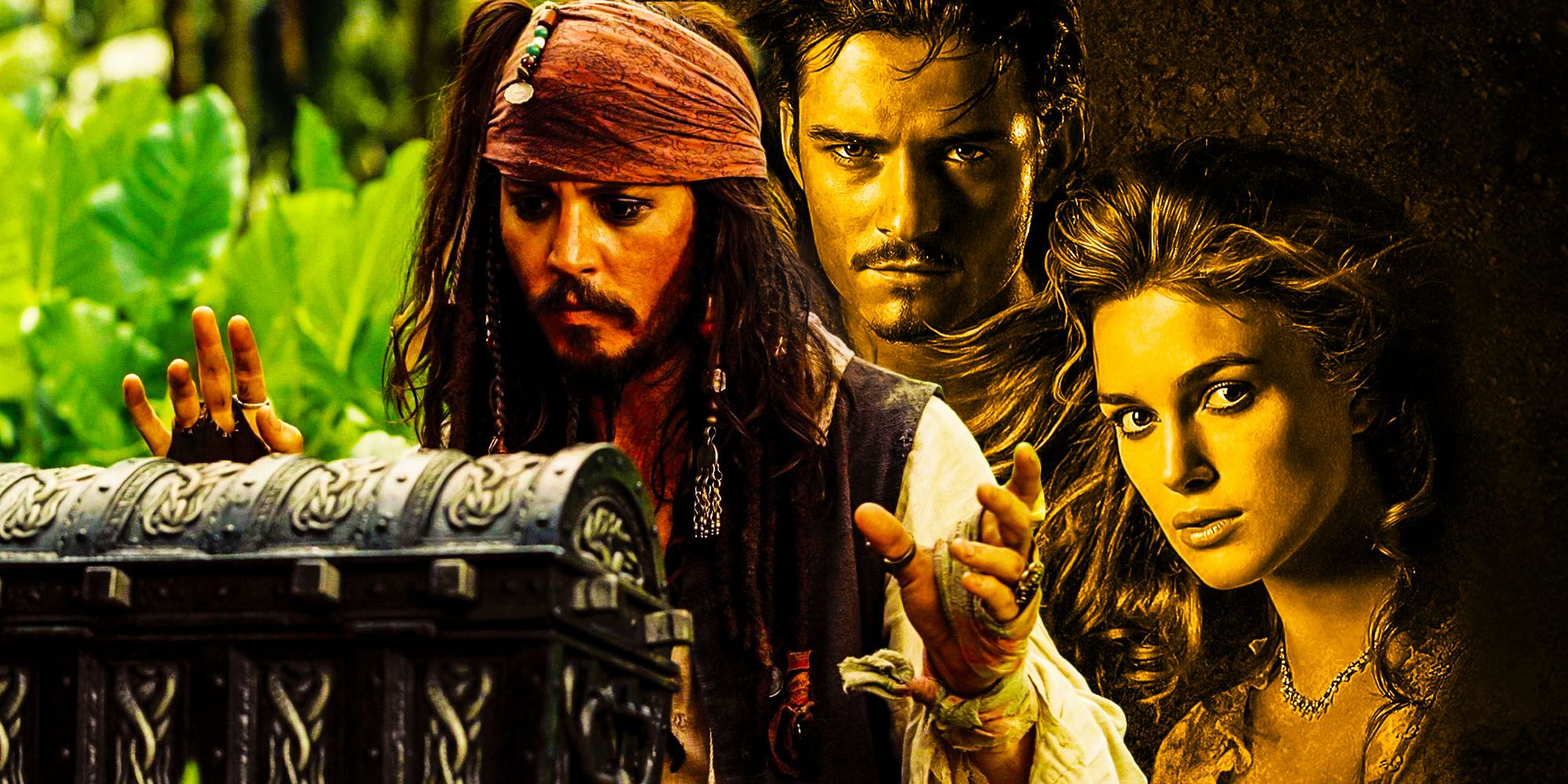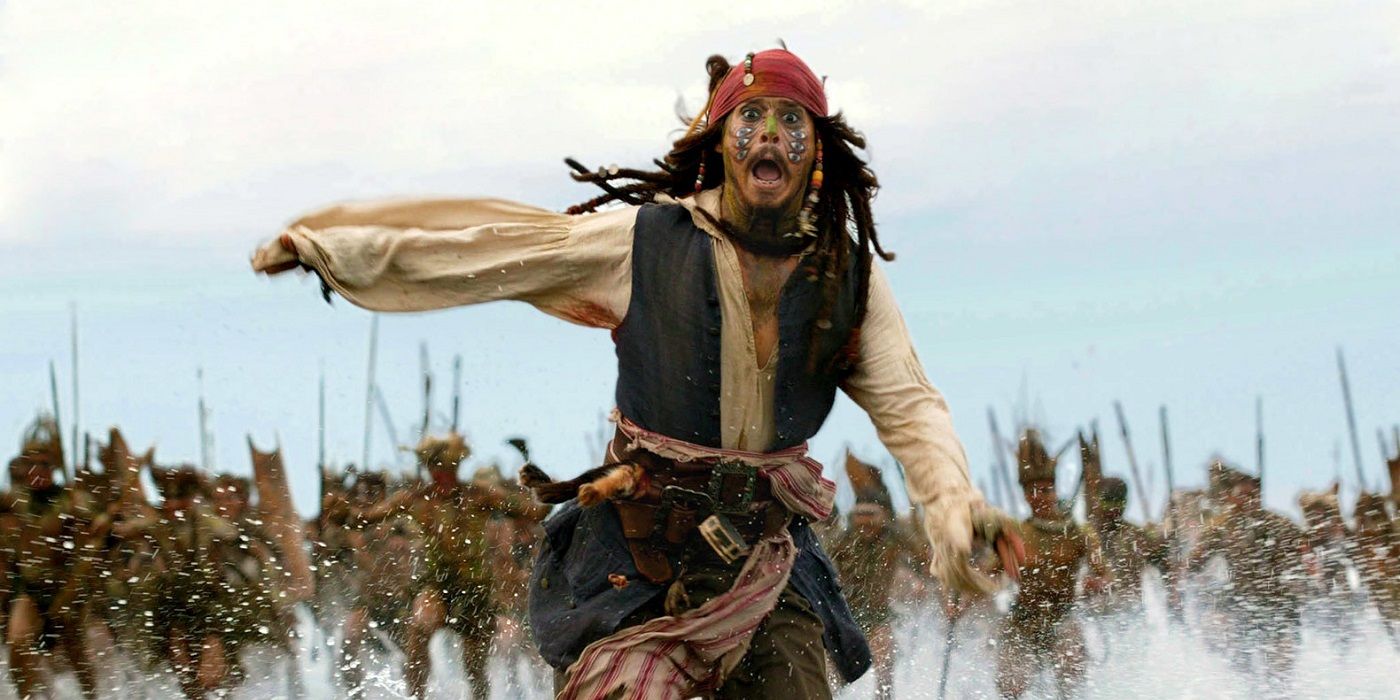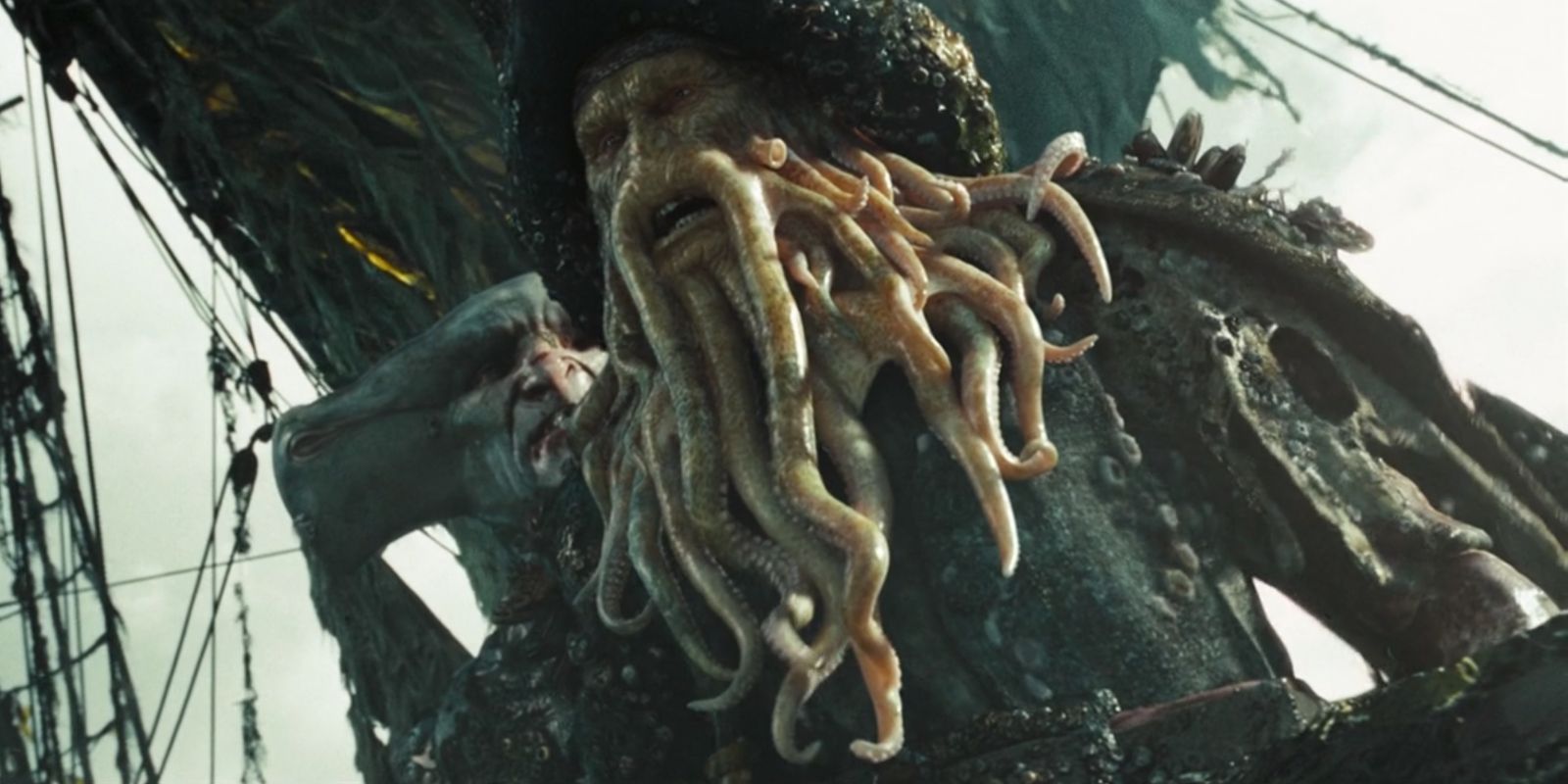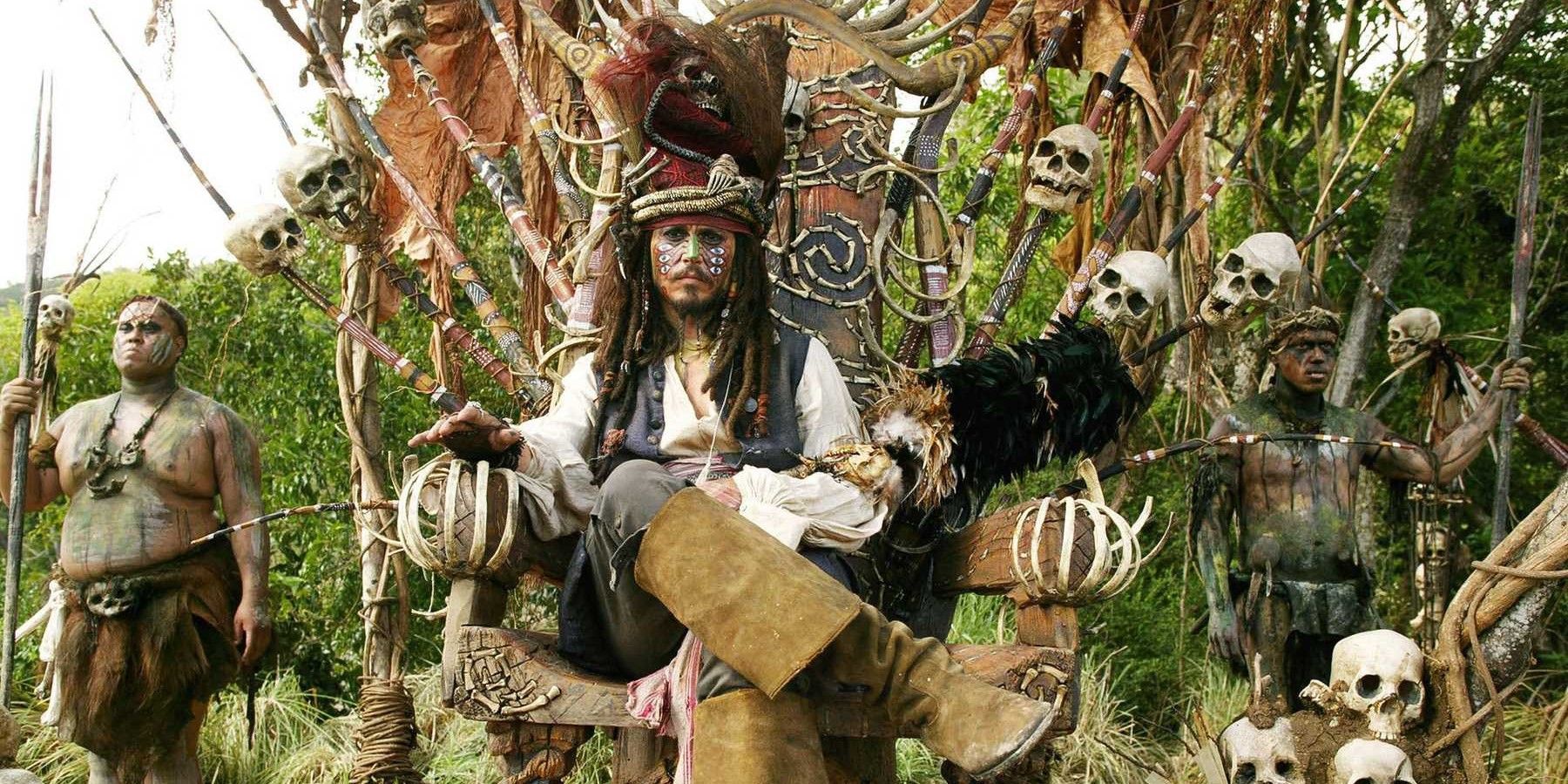The 2006 sequel Dead Man’s Chest was one of the better-reviewed Pirates of the Caribbean franchise outings, but the movie still displayed most of the major flaws that would go on to cause the critical decline of the series. Released in summer 2003, the original Pirates of the Caribbean movie The Curse of the Black Pearl did not arrive in cinemas burdened with unrealistic expectations. A fun summer blockbuster, the action-adventure only needed to avoid losing as much money as 1995’s Cutthroat Island (the most recent major swashbuckling action movie, and a massive financial flop) to be considered a success.
Some commentators were cautiously optimistic about the movie prompting a revival of the historical action-adventure sub-genre, but Pirates of the Caribbean was not poised to be a massive hit. However, a massive hit is exactly what The Curse of the Black Pearl soon became, earning over $650 million on a $140 million budget. The hugely popular movie was a hit with critics and audiences alike, and viewers were soon desperate to see more from Jack Sparrow and company.
Two sequels were shot back-to-back, with the first being released in 2006 and the second in 2007. These first sequels still had Gore Verbinski in the director’s chair and, although 2007’s At World’s End was a plot-hole-ridden effort, 2006’s Dead Man’s Chest was broadly seen as a worthy follow-up to the first film. Overlong and overstuffed, Dead Man’s Chest was never going to replace The Curse of the Black Pearl in viewer’s hearts, but it was a fine outing for the franchise regardless and a solid addition to the series. However, when viewed in retrospect, Dead Man’s Chest nonetheless served as a harbinger for the flaws that would come to define the diminishing returns of the Pirates of the Caribbean series going forward.
Dead Man’s Chest Could Not Pick A Tone
Despite having a tragic ending wherein Jack appears to die, Dead Man’s Chest opened with a Looney Tunes-style sequence that was even goofier than anything from the (already relatively light-hearted) first movie. The sequel failed to find a consistent tone and stick with it, swerving between slapstick silliness and moving moments like Elizabeth sacrificing Jack to the Kraken. That last-second twist came after a never-ending scramble between both heroes and villains to steal Davy Jones’ heart, a day-lit set piece of psychical comedy that could not have been further in tone from the dark and ominous - if fast-paced and witty - finale of The Curse of the Black Pearl.
The inability to stick with a dark tone that includes some moments of levity, or a light-hearted tone that included some scary moments, became more of an issue as the series progressed and later Pirates of the Caribbean movies swerved even more drastically. When the fifth film, Dead Men Tell No Tales, attempted to pull off a tragic twist in its closing moments, the sacrifice of Barbossa to save Carina fell flat because the sequel opened on the goofiest set-piece of the series so far. Similarly, At World’s End attempted a slew of silly Jack Sparrow scenes wherein the antihero interacts with countless clones of himself early on in its runtime, but few viewers were amused since the sequence took place immediately after the movie depicted the mass hanging of a group of pirates (including a child).
The Sequel’s Plot Was Too Convoluted
The double-crossing and gambit stacking of Dead Man’s Chest made it hard to pick a character to root for and even harder to care since everyone was constantly tricking each other and the preponderance of villains made each new player a little less impactful. This issue recurred in the fourth Pirates of the Caribbean movie On Stranger Tides, wherein Captain Barbossa is at different points both an ally and a trickster and Jack’s love interest turns out to be a major villain. The same convoluted plotting made At World’s End almost impossible to follow on first viewing. The supposedly ferocious and unbeatable Davy Jones was kowtowed by a nebbish company man in the form of Cutler Beckett, the first movie’s villain ended up marrying two of the heroes, and Jones turned out to have a long-running romantic subplot with another minor villain that added nothing to the story and went nowhere. The storylines of later sequels were a tangled mess, but this Pirates of the Caribbean sequel issue first came to light in the complicated plotting of Dead Man’s Chest and its intersecting Jack Vs Davy Jones Vs Elizabeth and Will Vs Norrington Vs The East India Trading Company story.
Dead Man’s Chest Relied On Depp’s Jack Sparrow
The first film in the series may have been an explosive debut for Jack, but the creators were still concerned about the character not landing and as such added a compelling plot for viewers who didn’t care about Depp’s antihero. Elizabeth and Will’s love story was far from an afterthought in The Curse of the Black Pearl, and the movie works as a more conventional adventure romance even with Jack’s antics elided entirely. From Dead Man’s Chest onwards, the filmmakers knew they had a breakout character and let Depp’s Jack Sparrow carry the movies, an approach that saw the supporting cast’s roles dwindle over the coming installments to the detriment of the franchise.
Where many viewers came to Dead Man’s Chest and At World’s End to see how Elizabeth and Will’s romantic plot ended, few fans could honestly say they cared about Sam Claflin’s forgettable On Stranger Tides character Philip or Kaya Scodelario’s Carina from Dead Men Tell No Tales. The supporting characters of these later outings are clearly only there to facilitate Jack’s story, where in the first film, Jack was a welcome addition to an already strong story. The franchise soon started to shamelessly over-rely on Johnny Depp’s Jack Sparrow, but the earliest instance of this does date back to Dead Man’s Chest. The first Pirates of the Caribbean sequel could have kept Depp as a deeply likable supporting star, but elevating him to leading man status was the beginning of the end for the franchise.




